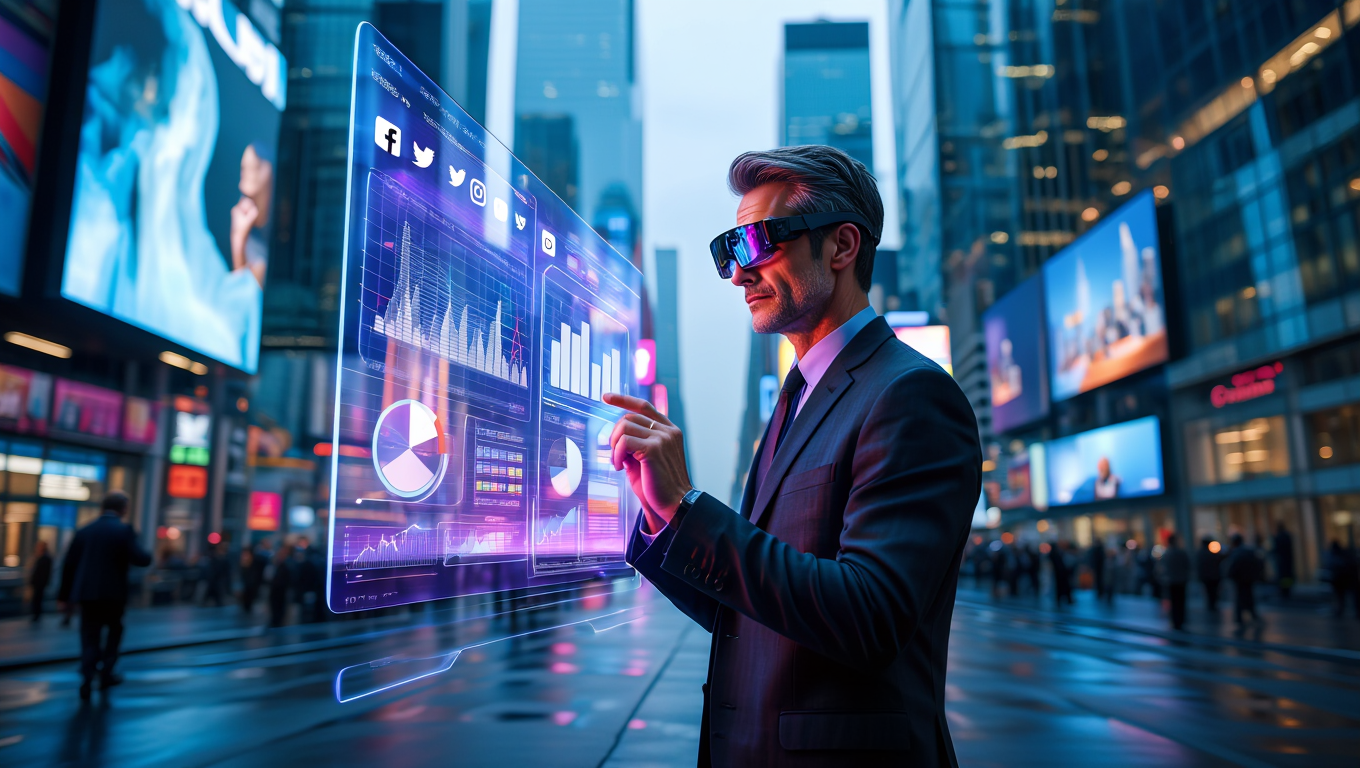10 Disruptive Digital Marketing Trends You Can’t Ignore in 2025

Introduction
2025 is a turning point: consumers are more savvy, privacy expectations are higher, and technology is evolving faster than ever. If your marketing still looks like it did in 2023, you’re falling behind. These are the trends that are going to define winners this year.
1. Zero-Party Data & Privacy-First Marketing
- With cookies disappearing and regulations tightening, zero-party data (what people tell you directly) becomes gold.
- Use interactive content (surveys, quizzes, polls) to collect preferences.
- Be super transparent about how you use data; trust = loyalty.
2. Gen AI Content Co-Creation
- Not just for copy: graphics, voiceovers, video snippets — AI tools will help generate or assist.
- Always human-review: tools can hallucinate or produce generic stuff. Style + brand voice still require a creative human.
- Use AI to speed up ideation & drafts, free humans for strategy and creativity.
3. Immersive Experiences (AR/VR + Metaverse)
- Brands will experiment with AR “try-ons,” virtual showrooms, VR events.
- Social media platforms are leaning into AR filters and immersive tools; don’t ignore them.
- Important for fashion, real-estate, retail, but even “boring” industries can use visualization (e.g. using AR to show furniture layout).
4. Micro-Influencers & Niche Communities over Macro reach
- Smaller creators with tight-knit, engaged audiences will outperform big names with low engagement.
- Community-based marketing (forums, Discord channels, niche Subreddits). Real conversations > pushy ads.
- Co-create with influencers, let them own content, not just scripted promos.
5. Voice, Audio & Conversational Interfaces
- Smart speakers, voice assistants: optimizing content for voice search and spoken queries.
- Podcasts, audio content, Clubhouse / Twitter Spaces / LinkedIn Live → real time discussion / thought leadership.
- Chatbots (with personality) that’ll handle more customer support & sales queries.
6. Hyper-personalization & Predictive Analytics
- Using historical behavior + real-time signals to deliver content/products users didn’t even know they wanted.
- Email/web push/push notifications that adapt based on behavior.
- Predictive models to forecast churn, upsell opportunities, lifetime value — then act on them early.
7. Short-Form & Snackable Content Dominance
- TikTok, Instagram Reels, YouTube Shorts: attention spans are shorter, so bite-sized wins.
- Reuse content: turn long videos or blog posts into reels/carousels/snappy clips.
- Prioritize visual storytelling + captions (because many watch without sound).
8. Sustainability & Ethical Branding
- Consumers care where products come from, environmental impact, social responsibility.
- Don’t just say you’re ethical; show it: transparent sourcing, carbon offset initiatives, diversity in marketing.
- Ethical practices can be a competitive edge, not a “nice-to-have.”
9. Unified Omni-Channel Customer Journeys
- Customers expect cohesive experience across social media, website, app, physical store (if applicable).
- Use tools to track behavior across channels, then tailor messaging accordingly.
- Consistency in voice, visuals, and experience critical.
10. Automation + AI at Core Ops, Not Just Ops Support
- More than chatbots: AI for forecasting demand, optimizing ad spend in real time, automating creative testing (A/B/C testing of visuals, copy).
- Use tools that allow “human in loop” to maintain brand integrity.
- Reallocate saved time to strategy, creative brainstorming, relationship building.
Conclusion
2025 isn’t just about adopting shiny new tools — it’s about integrating smarter strategies: respecting privacy, leveraging data, delivering delight, and being authentic. If you combine the tech side (AI, analytics, automation) with purpose, creativity, and transparency, you’ll not just survive — you’ll lead.
Enjoyed this article? Discover more on our blog →
